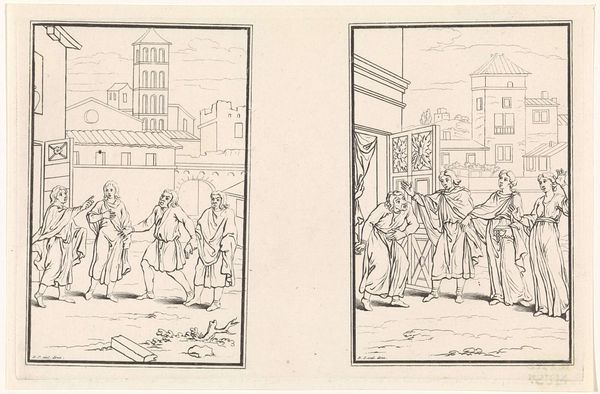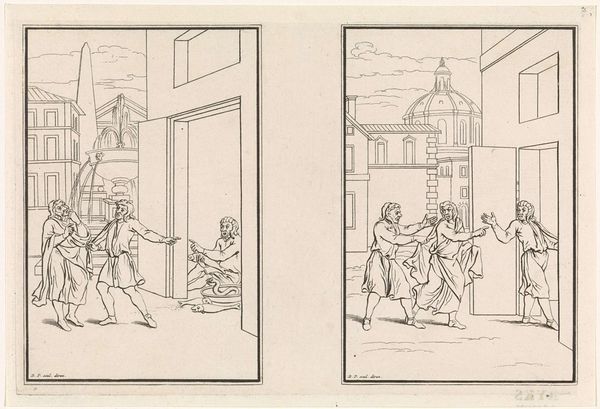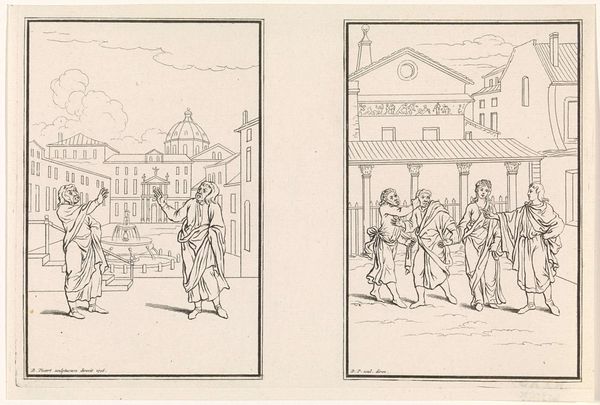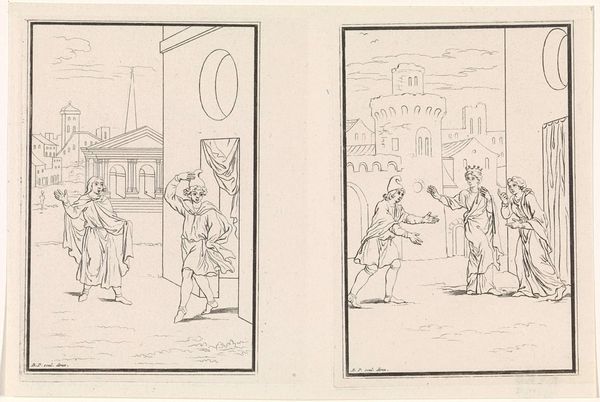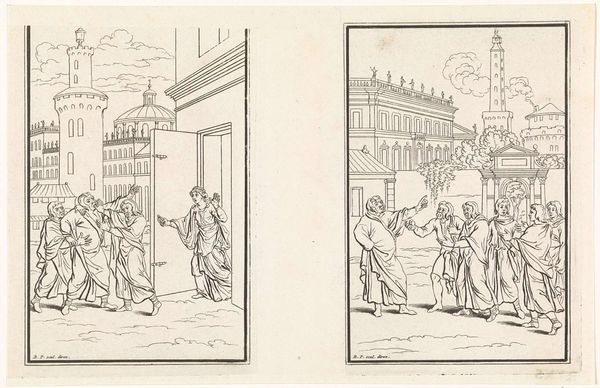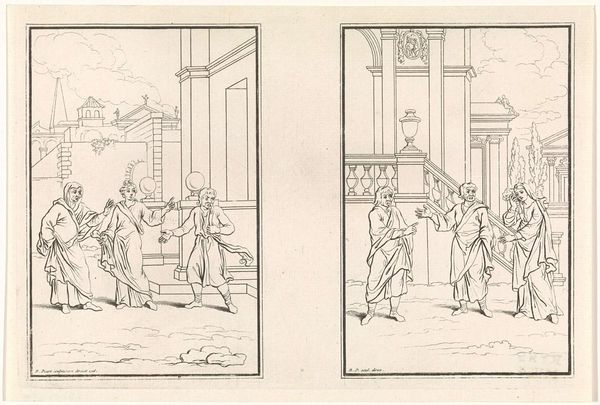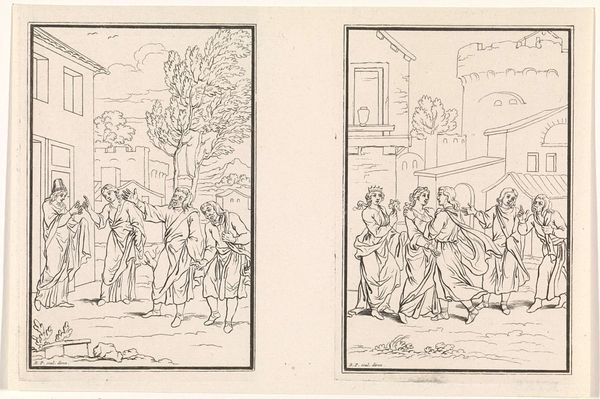
drawing, ink, pen
#
drawing
#
comic strip sketch
#
narrative-art
#
baroque
#
pen illustration
#
pen sketch
#
figuration
#
personal sketchbook
#
ink
#
ink drawing experimentation
#
pen-ink sketch
#
line
#
pen work
#
sketchbook drawing
#
pen
#
genre-painting
#
storyboard and sketchbook work
#
sketchbook art
Dimensions: height 131 mm, width 193 mm
Copyright: Rijks Museum: Open Domain
Art Historian: Here we have a pen and ink drawing entitled, "Twee scènes uit de komedie Andria van Terentius" or "Two Scenes from the Comedy Andria by Terrence." It's by Bernard Picart, dating back to 1715. Artist: Immediately, there's this storyboard vibe, right? Like two moments captured for a play, maybe a bit like looking at the ancestor of comic books. There is tension and gesture, yet something seems reserved, almost shy about expressing fully. Art Historian: Exactly! Picart's piece offers a glimpse into how classical theater, specifically Roman comedy, was visually consumed in the 18th century. Terrence's play, "Andria," hinges on mistaken identities and familial conflicts – themes quite potent through the ages. Artist: Yes! I notice the architecture—it feels…theatrical almost. Simple lines defining classical structures in both frames set the stage perfectly for the human drama unfolding. I'm also picking up on what seems to be a sense of slightly exaggerated or grotesque acting in those character poses—typical of commedia dell’arte? Art Historian: Certainly a hint of it! This exaggerations ensured that meaning was visually striking even from afar and, to a certain extent, standardized emotion using universally understood gestures—a common feature linking classical theatrical traditions, yes, including commedia dell’arte. Artist: Looking at those minimal yet communicative lines forming these figures reminds us about art being communication distilled down to its most resonant and basic forms. If it were my work, I imagine pushing a little further, really amplifying the feelings behind each stance—add color maybe!—bring each actor bursting right out of that drawing's surface to truly resonate with all viewers! Art Historian: And therein resides beauty, my friend, in its subtle conveyance through minimal means. And while an injection of emotional color might alter accessibility for some audience members and clarify emotion immediately, that power already persists beneath simple facades of drawings precisely due the richness inherent classical form languages within each understated figure contained upon its small paper rectangle canvas. Artist: Indeed. The art does leave an intriguing feeling with the figures trapped there; silent performances replaying history continuously thanks simply an artistic choice for minimalism above any flamboyant flourish on either character designs nor narrative itself! I am forever humbled revisiting them once again under current eyes... thanks ever very great thanks you again insightful friend!! Art Historian: The pleasure was all mine! It’s through such artistic echoes, that the past reminds us—narratives live eternally across forms.
Comments
No comments
Be the first to comment and join the conversation on the ultimate creative platform.

